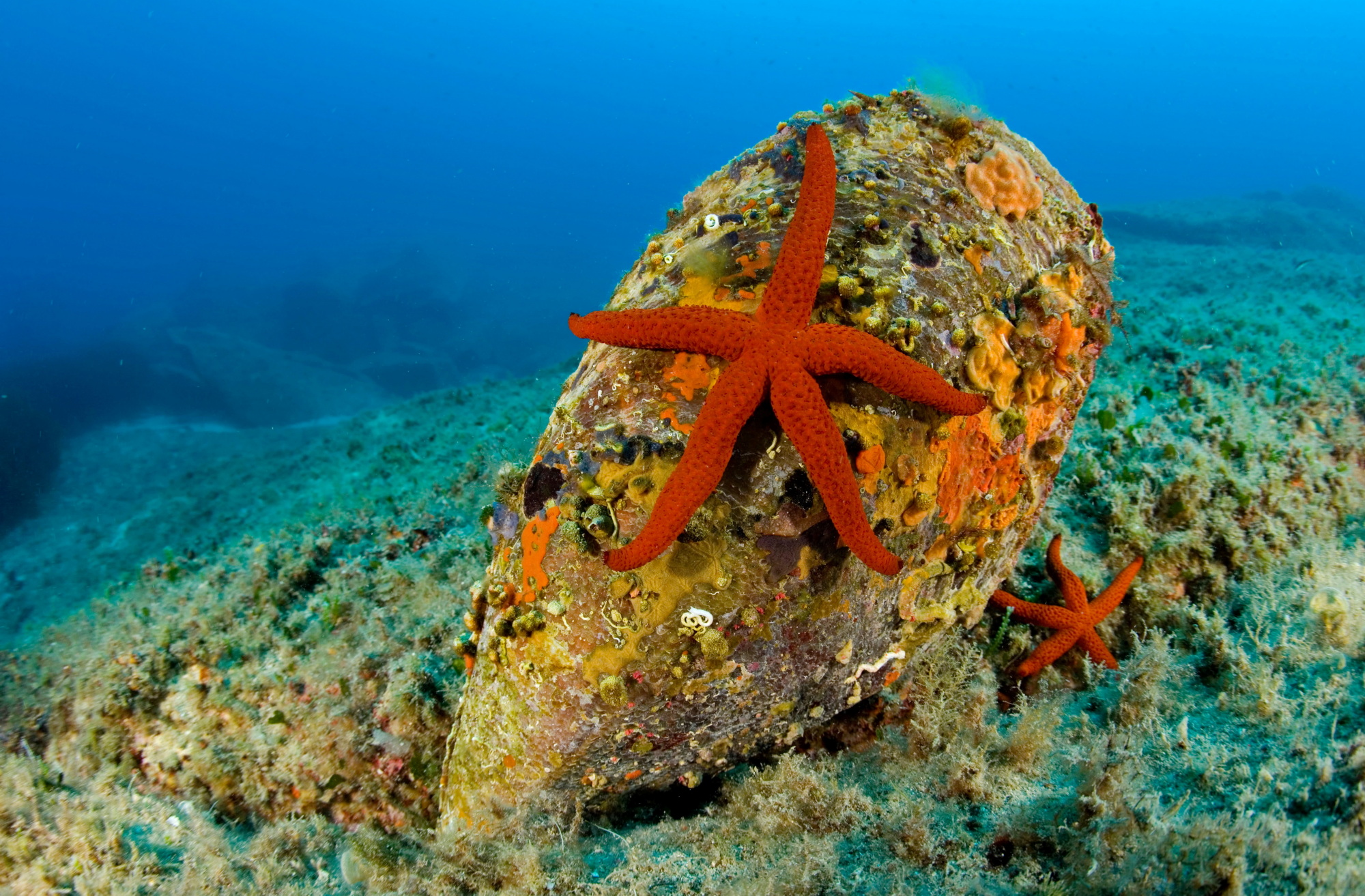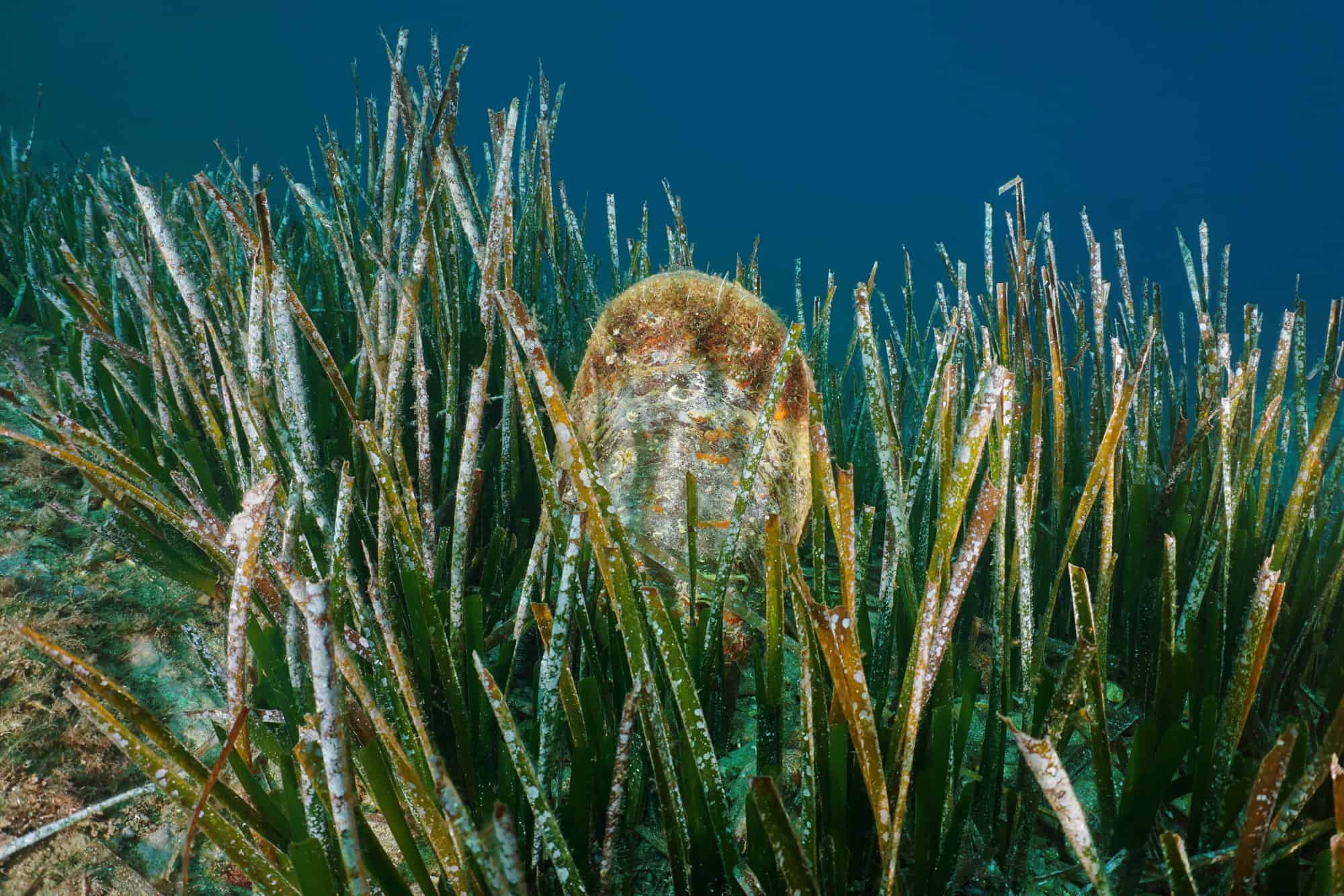Already present in our seas 20 million years ago, Pinna nobilis, is the biggest bivalve mollusc in the Mediterranean. From the Strait of Gibraltar to the Black Sea, there are no more majestic ones: this precious giant of the invertebrate fauna, in fact can even live up to 45 years and grow in a wonderful shell of over 120 centimetres, generously covered with scale and micro-organisms.
The species
Lives only in the Mediterranean
It is also known as “sea castanet” and is a filtering animal that lives between 3 and 60 metres deep. It inhabits some sandy bottoms and underwater Posidonia meadows, thus contributing to one of the most complex and precious ecosystems of the Mediterranean Sea. It is an endemic species, therefore exclusive to this sea, and when it finds the optimal environmental conditions, with stable currents and abundance of nutrients, it is able to form dense colonies of individuals.
Lives only in the Mediterranean
It is also known as “sea castanet” and is a filtering animal that lives between 3 and 60 metres deep. It inhabits some sandy bottoms and underwater Posidonia meadows, thus contributing to one of the most complex and precious ecosystems of the Mediterranean Sea. It is an endemic species, therefore exclusive to this sea, and when it finds the optimal environmental conditions, with stable currents and abundance of nutrients, it is able to form dense colonies of individuals.

From collecting to protected species
In the past this species has attracted the attention of shell collectors and collectors of byssus, a set of filaments produced by adult specimens of Pinna, used by the animal to adhere to the substrate and by man to produce a very precious textile fibre. By the end of the 80s, however, pollution, excessive harvesting and other factors, such as anchoring and trawling had triggered a first progressive decline in the Pinna nobilis populations along the Mediterranean coasts, forcing the European Community to formalise protection measures for it. Once protected, the populations have restored in a few years. However, this was only a temporary revival as the species has recently experienced a real collapse.
From collecting to protected species
In the past this species has attracted the attention of shell collectors and collectors of byssus, a set of filaments produced by adult specimens of Pinna, used by the animal to adhere to the substrate and by man to produce a very precious textile fibre. By the end of the 80s, however, pollution, excessive harvesting and other factors, such as anchoring and trawling had triggered a first progressive decline in the Pinna nobilis populations along the Mediterranean coasts, forcing the European Community to formalise protection measures for it. Once protected, the populations have restored in a few years. However, this was only a temporary revival as the species has recently experienced a real collapse.

The deadly epidemic
Starting from 2016, in fact, there was a sudden mass mortality event that, starting from Western Mediterranean, quickly upset the balance, bringing the species to the brink of extinction and forcing the IUCN (International Union of Conservation of Nature) to reclassify Pinna nobilis come Critically Endangered (in critical danger). At first, researchers have identified the protozoan Haplosporidium pinnae, which attacks the digestive system of the mollusk, as the only responsible for the epidemic. But more recent molecular analyses have also attributed to some species of bacteria (mycobacteria, vibrios) a primary role in the gigantic death of sea castanets. Waiting to consolidate certainties, the LIFE PINNA project plays a crucial and urgent role in preventing the extinction in the wild of this important representative of our seas biodiversity.
The deadly epidemic
Starting from 2016, in fact, there was a sudden mass mortality event that, starting from Western Mediterranean, quickly upset the balance, bringing the species to the brink of extinction and forcing the IUCN (International Union of Conservation of Nature) to reclassify Pinna nobilis come Critically Endangered (in critical danger). At first, researchers have identified the protozoan Haplosporidium pinnae, which attacks the digestive system of the mollusk, as the only responsible for the epidemic. But more recent molecular analyses have also attributed to some species of bacteria (mycobacteria, vibrios) a primary role in the gigantic death of sea castanets. Waiting to consolidate certainties, the LIFE PINNA project plays a crucial and urgent role in preventing the extinction in the wild of this important representative of our seas biodiversity.

Pictures of Canva e Alamy



